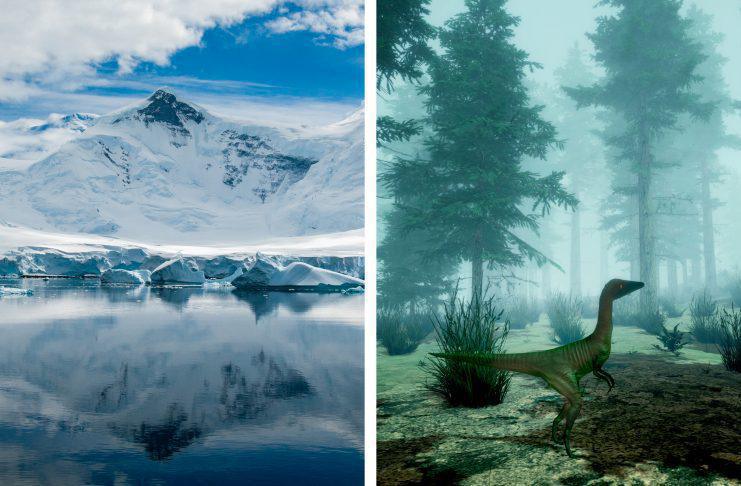Antarctica is situated almost entirely south of the Antarctic Circle and covers an area of 14.2 million km2.
Described as a polar desert, the continent has an average annual precipitation of 166 millimetres and is covered by ice with a thickness up to 1.9km.
Antarctica holds the record for the lowest measured temperature on Earth, −89.2 °C (−128.6 °F), but despite the harsh climate, is home to native species of mites, nematodes, penguins, seals, tardigrades, and forms of lichen or moss.
When Robert Falcon Scott led the ill-fated Terra Nova expedition to Antarctica in 1910–1913, his men were found dead with fossils from the Glossopteris tree, a genus of the extinct Permian order of seed ferns that died out during the end-Permian (Changhsingian) mass extinction.
Although Scott’s expedition at the time was seen as the folly of a tragic hero, the discovery of the Glossopteris fossils proved that Antarctica was once a forested landscape full of greenery and life. Other samples of Glossopteris fossils in Australia, New Zealand, Africa, and India would go on to suggest that Antarctica was once united to the other landmasses and continents.
From the end of the Neoproterozoic era to the Cretaceous, Antarctica was part of the supercontinent Gondwana. The formation of Gondwana began 800 to 650 Ma with the East African Orogeny, the collision of India and Madagascar with East Africa, and was completed 600 to 530 Ma with the overlapping Brasiliano and Kuunga orogenies, the collision of South America with Africa, and the addition of Australia and Antarctica, respectively.
During the Cambrian period, West Antarctica was partially in the northern hemisphere while East Antarctica was situated at the equator where invertebrates and trilobites flourished in the tropical seas.
Antarctica saw a period of glaciation during the Late Paleozoic icehouse 360 to 260 Ma as it drifted closer to the South Pole. After deglaciation in the latter half of the Early Permian, the landscape was transformed by Glossopteris (first discovered in Scott’s expedition), with later species of Cordaitales, sphenopsids, ferns, and lycophytes.
During the Triassic, Antarctica was dominated by pteridosperms from the genus Dicroidium, as well as associated Triassic flora such as ginkgophytes, cycadophytes, conifers, and sphenopsids. It was during this period that the first Tetrapods migrated, with palaeontologists finding fossils that belong to the Lystrosaurus Zone fauna.
The Jurassic and Cretaceous period saw the arrival of dinosaurs from the genus Cryolophosaurus and Glacialisaurus, first discovered in the Transantarctic Mountains, with some evidence of Antarctopelta, Trinisaura, Morrosaurus and Imperobator.
Following the breakup of Gondwana which started 180 Ma, Antarctica was completely isolated from the other continents, resulting in the creation of the Antarctic Circumpolar Current (ACC).
Models of Antarctic geography and the ACC suggest that the current, in combination with lowering carbon dioxide levels caused the creation of permanent polar ice caps that spread until the continent was completely covered with in ice.
Header Image Credit : Shutterstock


